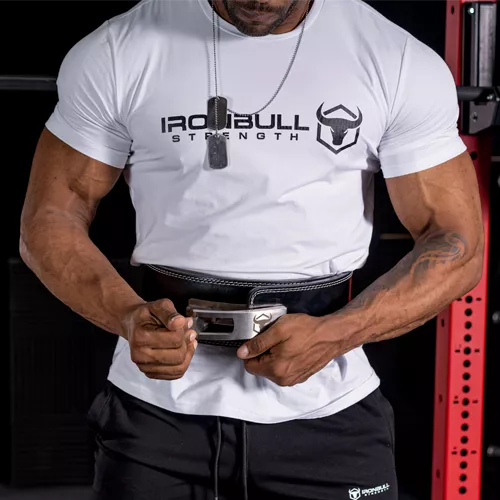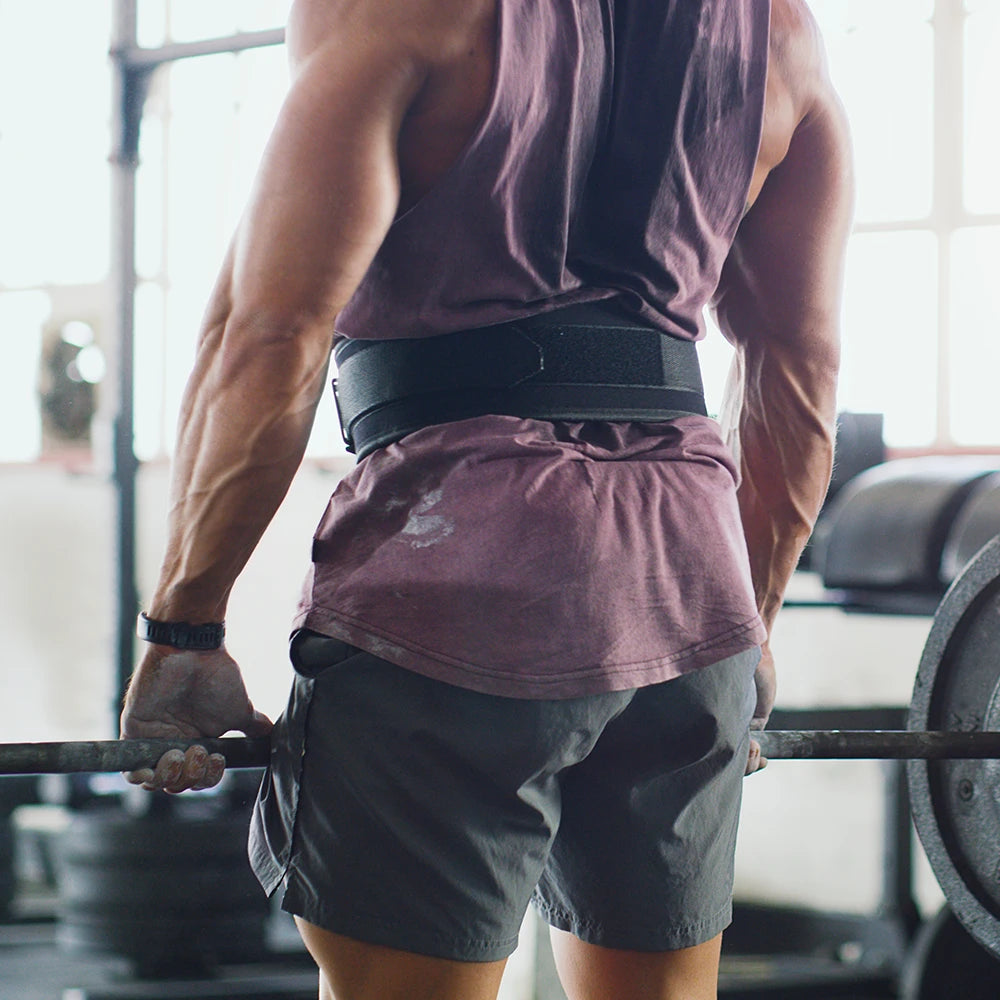How to Achieve Broader Shoulders Quickly

The significance of wider shoulders for a well-developed physique
Broader shoulders can be a game changer for your overall appearance. Think of it like a tailored suit; the right cut can make all the difference.
Wider shoulders create that coveted V-taper, which not only enhances your physique but also boosts your confidence.
When you look in the mirror and see those wide shoulders, it’s hard not to feel like a superhero. The broader your shoulders, the narrower your waist appears, giving you that classic aesthetic that’s often sought after in fitness circles.
Wider shoulders: a look that says strength, health, and vitality.
In the early years of my weight training journey, I frequently sought feedback from friends and trainers about my physique. One comment that consistently stood out was about my shoulder width.
That constant reminder pushed me to think critically about how to achieve the look I wanted.
Realization and shoulder growth challenges
Hearing that feedback sparked a desire in me to broaden my shoulders. It became clear that achieving a more robust upper body was essential for my overall aesthetic goals.
Yet, there was a hitch—my bone structure was on the smaller side, making it a bit trickier to achieve those wider shoulders.
For those who share this challenge, it can feel like a frustrating uphill battle. You might hit the gym consistently, but still notice that your shoulders aren’t growing as you’d like.
It’s easy to feel disheartened when you see others with broader builds, but understanding your unique body type is crucial.
With time and dedication, I learned that it’s possible to overcome these challenges. Focusing on specific exercises and strategies tailored to my body type made a significant difference.
Progress might be slow, but it’s worth it when you start to see results.
Broader Shoulders: My journey of visible shoulder gains
I’ve come a long way in my journey toward broader shoulders. My current state is a testament to the hard work and strategies I’ve implemented.
When I look in the mirror now, I can see visible improvements in shoulder width. This progress has not gone unnoticed by others, either.
Friends and gym buddies have started to comment on the changes they see, which feels validating.
It’s not just about the aesthetics; the increased strength and functionality of my shoulders have been rewarding as well.
With each week that passes, I become more excited about my training regimen. The combination of dedication, effective exercises, and a commitment to improvement has yielded positive results.
This journey has taught me the value of patience and persistence.
Prioritize effective side delt growth exercises
To achieve broader shoulders, it’s essential to focus on your side delts. These muscles are key players in creating that desirable width.
Research has shown that certain exercises target specific shoulder regions more effectively.
When you think about shoulder workouts, lateral raises often come to mind. They’re simple but powerful.
In contrast, shoulder presses can engage different parts of the shoulder, but side delts are often left wanting more.
One exercise that has gained popularity is the behind-the-body cable lateral raise. This move uniquely engages the side delts, providing a new challenge for muscle growth.
Additionally, using a bench for seated lateral raises can help isolate the side delts, ensuring you’re getting the most out of each repetition.
Understanding the concept of Maximum Voluntary Isometric Contraction (MVIC) can help you choose the right exercises. MVIC measures muscle activation, providing a scientific foundation for your workout choices.
The higher the MVIC percentage for an exercise, the more effective it is for muscle engagement.
Optimized exercises for side delt activation
Let’s break down some effective exercises for activating the side delts, starting with the Bent-over Lateral Raise. This exercise has demonstrated the highest activation at 87% MVIC, making it an essential part of your shoulder workout routine.
The beauty of this move lies in its ability to isolate the side delts, promoting muscle growth without involving other muscle groups excessively.
Next up, the Lateral Raise (with a neutral grip) activates the medial deltoid at 30.3% MVIC. It’s a classic shoulder exercise that many have incorporated into their routines for good reason.
Similarly, the Dumbbell Shoulder Press comes in at 27.9% MVIC, making it another viable option for shoulder development.
While the Upright Row may not have a specific MVIC percentage provided, studies show increased deltoid activity with wider grips, particularly for those with broader frames. This exercise can be beneficial for individuals looking to maximize shoulder engagement.
Lastly, the Reverse Peck Deck and Seated Row are also effective for targeting the middle deltoid, although they may not activate the deltoids as strongly as the aforementioned exercises.
It’s essential to remember that not all exercises need to have a high MVIC percentage.
While some exercises have a lower MVIC percentage, they work the surrounding muscles that are important for growing the side delts.
Think of these exercises as part of the foundation, contributing to overall shoulder stability and strength, which is essential for optimal growth and balanced development.

Increase training volume for side delts
Shoulder muscles have a great capacity for recovery, which means you can train them more frequently. To really push for broader shoulders, consider increasing the training volume specifically for your side delts.
This approach may require some adjustments to your weekly workout routine.
For example, incorporating additional sets and exercises each week can lead to noticeable changes. Aim for a mix of high-rep and low-rep workouts to stimulate muscle growth effectively.
Moderate training volume is often a sweet spot for those seeking broader shoulders. It’s not about going all-out every session, but rather consistently challenging your muscles over time.
This strategy has been beneficial for many who want to see real results without risking burnout.
Science-backed strategies for muscle growth
Number of sets
- Volume and Hypertrophy: A graded dose-response relationship exists between weekly training volume and muscle growth. A minimum of 10 weekly sets per muscle group is recommended for hypertrophy.
- Optimal Set Range: Performing 3-6 sets per exercise is often suggested for hypertrophy, with higher volumes (up to 28-30 sets per muscle group per week) potentially offering greater gains.
- Diminishing Returns: Beyond a certain threshold, increasing the number of sets does not significantly enhance hypertrophy.
Frequency of training
- Training Frequency: Frequency alone does not directly influence hypertrophy when volume is equated. However, higher frequencies can help distribute the training volume more effectively throughout the week.
- Optimal Frequency: Training each muscle group 2-3 times per week is generally recommended. This allows for adequate recovery and consistent stimulation of muscle protein synthesis.
- High Frequency: Very high frequencies (e.g., daily training) have not been extensively studied but may offer benefits for trained individuals by maintaining a higher anabolic environment.
Practical recommendations
- Repetitions: Aim for 6-12 reps per set for hypertrophy, adjusting the load to ensure near-failure by the end of each set.
- Sets: Perform 3-6 sets per exercise, targeting at least 10 weekly sets per muscle group, and consider higher volumes for advanced lifters.
- Frequency: Train each muscle group 2-3 times per week, ensuring total weekly volume is sufficient for hypertrophy.

Use appropriate weights with a controlled form
Selecting the right weight is crucial for maximizing the effectiveness of your workouts. When it comes to lateral raises, the temptation to lift heavier can lead to poor form.
Instead, focus on using lighter weights with controlled movements.
This strategy allows for progressive overload—gradually increasing the weight as your strength improves. It’s about maintaining that perfect form while ensuring you’re challenging your muscles effectively.
One helpful tip is to utilize a home gym squat rack for compound shoulder exercises like overhead presses. This setup not only allows you to safely lift heavier weights but also gives you the confidence to push your limits without risking injury.
Intensify your workouts
To really see those shoulders pop, it’s essential to push through mental barriers. Many fitness enthusiasts have experienced that moment when you think you can’t do another rep, but then surprise yourself by pushing through.
Research supports the idea that training intensity plays a significant role in muscle growth. Those extra reps, even when they feel tough, can lead to the breakthroughs you’re looking for in your shoulder development.
In my experience, embracing those moments of discomfort has led to tangible results. It’s about shifting your mindset and understanding that overcoming mental limits can unlock your potential for muscle activation and growth.
Maintain a calorie surplus
Diet is a critical component of muscle growth. To see those broad shoulders materialize, you need to be in a calorie surplus.
Simply put, you have to consume more calories than you burn to support muscle gain effectively.
Research highlights the importance of this surplus, especially when aiming to pack on muscle. It might sound simple, but making dietary adjustments can be challenging.
For example, incorporating high-calorie foods into your meals while balancing your macronutrients is essential.
During my bulking phase, I learned the importance of strategic eating. It was a balancing act between enjoying those high-calorie treats and maintaining a nutritious diet.
The anticipation of cutting excess fat later to reveal those hard-earned muscle gains is what keeps the motivation alive.
Also, using free weights during this phase is crucial. Not only do they help maintain muscle mass, but they also engage stabilizer muscles, which play a vital role in preventing injuries during more intense workouts.
The importance of balancing front and rear delt development for overall shoulder aesthetics
Achieving broader shoulders isn’t just about focusing on the side delts. To create a well-rounded appearance, it’s essential to balance the development of your front and rear delts.
This holistic approach ensures that your shoulders look symmetrical and aesthetically pleasing.
Incorporating various exercises that target all areas of the shoulder will enhance your overall look. It’s easy to get caught up in the quest for width and forget about balance, but neglecting any part can lead to imbalances that affect your performance and appearance.
Building a Comprehensive and Safe Shoulder Routine
Consider reading further on effective shoulder exercises. Understanding the nuances of your workouts can help you build a comprehensive shoulder routine.
Lastly, don’t forget about the importance of elbow support. Maintaining proper form is essential not only for muscle growth but also for injury prevention.
So, as you lift, keep those elbows stable and aligned to support your journey toward achieving broader shoulders.


